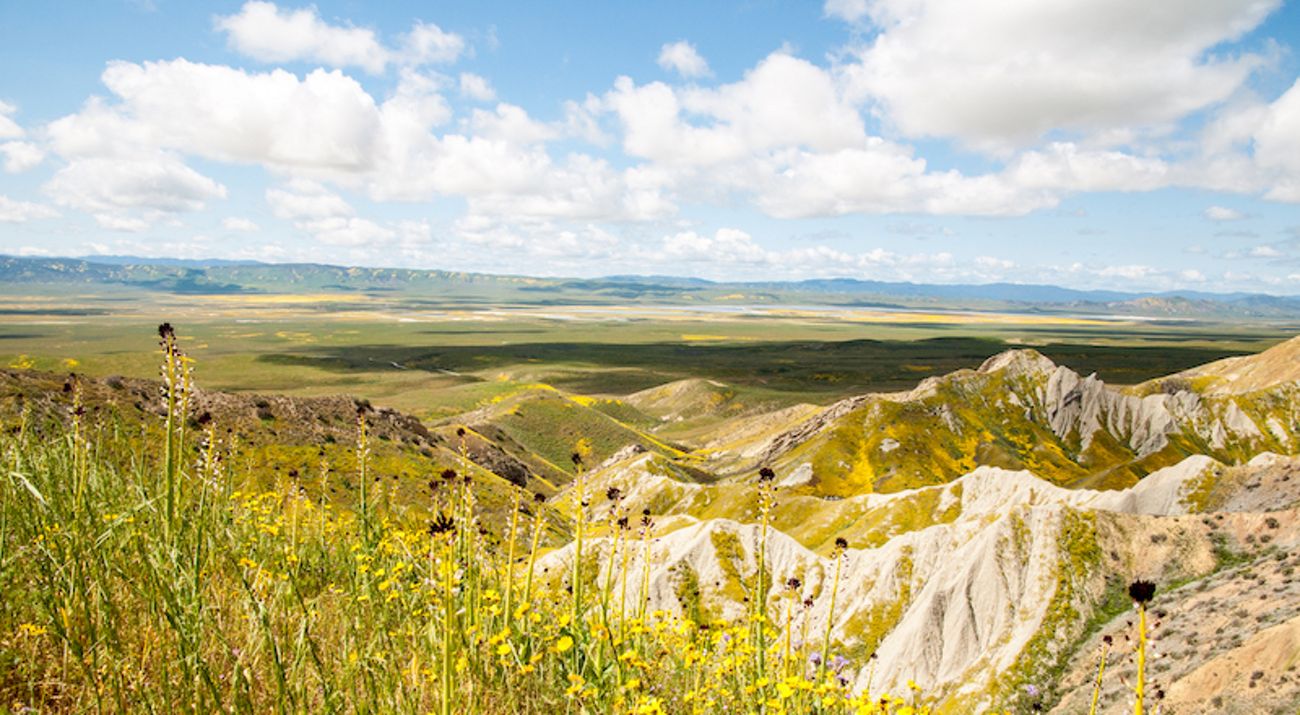Decades of Protection
Over four decades ago, TNC embarked on conservation efforts across the upland landscapes of the San Joaquin Valley in Central California. These landscapes are some of the most threatened habitat types anywhere in the country due mostly to massive land transformation that occurred through agricultural development across the Valley over 150 years. TNC began at the Carrizo Plain which hosts the highest concentration of threatened and endangered species anywhere in the continental U.S. The Carrizo was also threatened by its close proximity to one of the nation’s largest oil production fields.
Working with many partners, and most closely with the Bureau of Land Management and California Department of Fish and Wildlife, TNC’s initial investments in acquisition grew to what is now the 250,000+ acre Carrizo Plain National Monument. The Monument is surrounded by more than 100,000+ acres of additional conservation land owned by other public and private entities.
With the land protected, TNC was determined to leverage this win and work to protect and manage similar habitats across the San Joaquin Valley. In 1993, the Avis S. Goodwin Research and Stewardship Endowment was established to help support these efforts at Carrizo and beyond. In 2001, the Carrizo Plain National Monument was established and in 2009 TNC became a Managing Partner of the Monument along with the Bureau of Land Management and California Department of Fish and Wildlife. This gave TNC a seat at the table, to help conduct and direct the conservation science needed to inform management of the Carrizo Plain and similar habitats across the San Joaquin Valley.
Applying our Science
TNC and partners have used the endowment to fund answering the most important questions about how to manage the Monument for the benefit of a large suite of threatened and endangered species. Early studies examined the role of cattle grazing at the Monument and its impact on threatened and endangered species, like the giant kangaroo rat (see An Encounter with the Giant Kangaroo Rat in the New Yorker).
Beginning in 2006, the endowment began funding a new crop of young researchers who have been conducting science for conservation at the Carrizo Plain and across the San Joaquin Valley ever since. One such researcher, Dr. Tim Bean, collaborated with TNC scientists and partners to conduct research that has led to: 1) a greater understanding of the role giant kangaroo rats play as a keystone species in these desert habitats by providing habitat for many other species; and 2) an improved approach to remotely monitoring giant kangaroo rat populations (see Capturing Rats from Space). This research has since expanded across the San Joaquin Valley, including in the Panoche Valley where his team explored the role of genetics in the conservation of the giant kangaroo rat and its habitat (see publication links below).
Another endangered species with unanswered management questions was the blunt-nosed leopard lizard. Through collaborations with the Bureau of Land Management and Dr. Michael Westphal, Conservancy scientists helped launch research focused on where the lizards existed in the past, where they are currently, and where they may need to be in the future under a changing climate with prolonged droughts. Other research focused on the role of shrubs as habitat for the lizards and as facilitators of other native plants and animals. This work has since expanded across the San Joaquin Valley, including the Panoche Valley. Other research on the genetics of the blunt-nosed leopard lizard has helped identify where to prioritize protection now and where they may need to be moved in the future to survive as the climate changes. (See all related publications below.)
The Road Ahead
In some areas of California, as a result of the Sustainable Groundwater Management Act (SGMA), it is likely that large amounts of agricultural land will need to come out of production; predictions by TNC scientists and partners at Stanford suggest that as many as 200,000 acres will need to be retired over the next 10 to 20 years to achieve basin sustainability. A major opportunity lies in that scale of land-use change. If portions of those retired lands are restored as a connected network of natural lands, multiple benefits could be created for farmers and San Joaquin Valley communities, in addition to helping meet groundwater sustainability.
With that in mind, TNC embarked on a conservation strategy that focuses on restoring nature to the places where agriculture is no longer sustainable and retirement is likely, either because of the lack of water or the condition of the soil, and facilitating a more sustainable and healthy future for the communities in the Valley.
As this strategy was launched, TNC once again turned to science and long-term collaborators to better understand how restoration of retired farmlands could work for nature and people based on what has been done in the Valley and in similar agricultural regions around the world. The April 2021 Island Press book Rewilding Agricultural Landscapes: A California Study of Rebalancing the Needs of People and Nature, edited and written by TNC staff and colleagues, is a culmination of this decades old commitment to conservation and the science that informs it.
The book captures more than 30 years of science and on-the-ground experience to chart a path to a more hopeful, equitable, healthy and sustainable future in the San Joaquin Valley. The book takes a programmatic approach with lessons that can be applied in similar regions around the world and concludes with a vision of a region restored to ecological balance and equipped for inevitable climate change, allowing nature and people to prosper.
